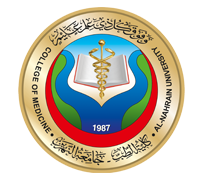|
Vol. 15 Issue 1 January - March / 2017
Published on website | Date : 2017-05-17 12:13:05
COMPARISON OF TWO VIRUS CONCENTRATION METHODS FOR ENTERIC VIRUSES DETECTION IN MOROCCAN WASTEWATER AND TREATED EFFLUENTHasna A. Amdiouni, Leena Maunula, Arwa M. Al-Shuwaikh, Jalal NourlilAbstractBackground:The effluents of wastewater treatment plants may contain infectious human viruses representing a major public health issue. Wastewater must be analyzed for viruses' detection using easy and rapid protocol.
Objective: To compare between two viral concentration methods used for detection of enteric viruses in wastewater and treated effluent. Then assess the presence of viral genomes by cell culture and polymerase chain reaction (PCR). Methods: Fifty samples of wastewater were collected from two wastewater treatment plants during one year survey (January-December 2009) in order to compare two virus concentration methods; the polyethylene glycol (PEG) precipitation and the two-phase separation method, advised by the World Health Organization guidelines. Then assess the presence of viral genomes of human enteroviruses (EV), human adenoviruses (HAdV), hepatitis A and E viruses (HAV and HEV), human noroviruses (HuNoV), human rotaviruses (RV) and human astroviruses (HAstV) by cell culture and PCR technique. Results: This study, using three statistical tests, showed that there was no significant difference between the two concentration methods: the PEG precipitation and the two-phase separation (P>0.05). Conclusion: Considering this study with protocol time, cost and simplicity. The PEG precipitation seems to be an alternative method of the two-phase separation method. Keywords: Wastewater, enteric-virus, concentration methods, PCR, cell culture, Morocco Citation: Hasna A. Amdiouni, Leena Maunula, Arwa M. Al-Shuwaikh, Jalal Nourlil. Comparison of two virus concentration methods for enteric viruses detection in Moroccan wastewater and treated effluent. Iraqi JMS. 2017; Vol. 15(1): 27-38. doi: 10.22578/IJMS.15.1.5 Full-text |
Some tools below are only available to our subscribers or users with an online account |
 |
Please wait until the current process completes ... |



